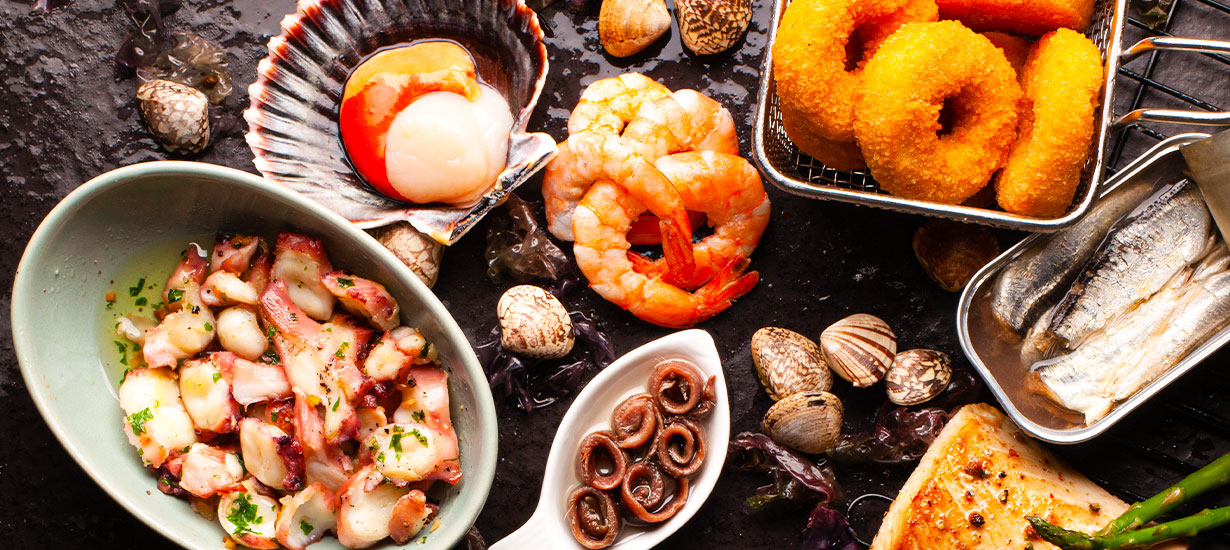Peruvian superfishing takes the world by storm
Síguenos en:Google News
Peru's rich biodiversity and marine ecosystems are gaining recognition across continents, showcasing the country as a trusted source of high-quality seafood products.
We are generating interest! In March 2023, Peru generated significant excitement with its fishery products at the "Seafood Expo North America" in the United States, attracting commercial interest worth $42 million. Countries like Spain, Canada, Mexico, South Korea, Japan, China, and the U.S. showed strong interest. Among the most sought-after products were mahi-mahi, various squid derivatives (fillets, rings, buttons, and cubes), mahi-mahi fillets, mixed seafood, and more.
Non-traditional products generated $1.708 billion in exports, marking a 10.7 % increase in value compared to 2022. The most significant category was frozen products, with an export value of $1.565 billion, accounting for 54 % of total exports and showing an 11.7 % growth. Canned and semi-preserved products saw a 9.9 % increase, while fresh products grew by 8.2 %.
 Fuente Pioneros Cine / PROMPERÚ
Fuente Pioneros Cine / PROMPERÚ
Highest-priced fish products
According to the annual report Desenvolvimiento del Comercio Exterior Pesquero y Acuícola 2023 (Development of Foreign Trade in Fisheries and Aquaculture 2023), issued by PROMPERÚ, exports from the fishing sector reached a total of $2.923 billion for the year.
A total of 400 exporting companies in the fishing sector were registered, reflecting a 7 % increase compared to 2022, with the addition of 27 new companies. The main destinations for Peruvian hydrobiological exports were led by China, primarily for fishmeal, followed by the United States, South Korea, and Spain, particularly for frozen products.
Here are the main fishery products for export:
Frozen products
In 2023, total exports in this category reached $1.565 billion, reflecting an 11.7 % increase from the previous year. The standout product was squid and its derivatives, which contributed 53 % of sales, amounting to $831 million. Shrimp followed, accounting for 16.7 % of exports, totaling $262 million.
Peru remains one of the world's largest exporters of frozen squid by volume, with key markets such as China (35 %), South Korea (14 %), Spain (14 %), Thailand (11 %), and Japan (4 %) fueling this growth. The most sought-after squid forms include raw tentacles, raw fillets, precooked fillets, and raw squid fins.
 FuenteJuan Aragon / PROMPERÚ
FuenteJuan Aragon / PROMPERÚ
Squid
In 2023, the total landing of squid reached approximately 622,000 tons, marking a 36 % increase compared to 2022. Of this total, 92 % was allocated for the production of frozen products, with 83 % of the industrial plants located in Paita. The remaining 7.5 % of the squid was directed to the domestic market as a fresh product.
 Fuente Sandro Aguilar / PROMPERÚ
Fuente Sandro Aguilar / PROMPERÚ
Mahi-mahi
Mahi-mahi is the second most important artisanal fishery in Peru, following squid. This exclusive artisanal fishing activity provides employment and sustains the livelihoods of over 9,000 families. In 2023, landings of mahi-mahi reached 61,000 tons, reflecting an 8 % increase compared to 2022. Of this total, 40,000 tons were allocated for frozen products, representing a 5 % rise. However, exports of frozen mahi-mahi in 2023 totaled $97 million, a 32 % decline from the previous year. The primary markets for these exports were the United States (81 %), Ecuador (6 %), and Guadeloupe (3 %).
Canned products
In 2023, 168,206 tons were landed for canned food production, marking a 4.6 % increase compared to the previous year. Canned fish exports reached $100 million, reflecting a 9.9 % growth, with 18,000 tons exported, accounting for 11 % of the total landings. Tuna was the leading resource, representing 45 % of exports with a value of $45 million, followed by anchoveta, which accounted for 40 % and generated $39 million. The primary markets for these exports were the United Kingdom ($20 million), the United States ($18 million), Spain ($15 million), Italy ($11 million), and Germany ($7 million), with the United Kingdom importing both canned tuna and anchovy.
 Fuente Juan Aragon / PROMPERÚ
Fuente Juan Aragon / PROMPERÚ
Fisheries sustainability
Currently, both the public and private sectors are focused on promoting sustainable artisanal fishing, particularly in the mahi-mahi fishery, which has become the second most important in Peru. In recent years, efforts have been made to ensure its sustainable development, aiming to create a positive impact on environmental, economic, and social aspects. Sustainability is crucial in fisheries, as it is a key requirement for international trade, enhancing competitiveness while protecting marine ecosystems.
 Fuente Juan Aragon / PROMPERÚ
Fuente Juan Aragon / PROMPERÚ
Artisanal fishing in Peru
Artisanal fishery production is directed toward processing and export, as well as the domestic market. Additionally, the fishing sector plays a vital role in food security, as it boasts the highest per capita fish consumption in South America and engages the largest number of fishermen.
This activity is a significant source of employment, generating around 25,000 direct jobs in 2023, with approximately 14,000 in the processing sector and 11,000 in the extractive sector. Additionally, indirect jobs related to this activity reached 75,000.
There are over 88,000 artisanal fishermen in Peru, with 55,000 working in the maritime sector, primarily along the northern and central coasts. In the continental area, which includes lakes and rivers, approximately 33,000 artisanal fishermen operate, mostly in the Amazon and along the northern and central coasts. These figures are based on information provided by the Ministry of Production (Produce) up to 2021.
The diverse array of fish, mollusks, and crustaceans available in the Peruvian sea enhances the livelihoods of our fishermen and strengthens the export supply of the sector
 Fuente Daniel Silva / PROMPERÚ
Fuente Daniel Silva / PROMPERÚ








